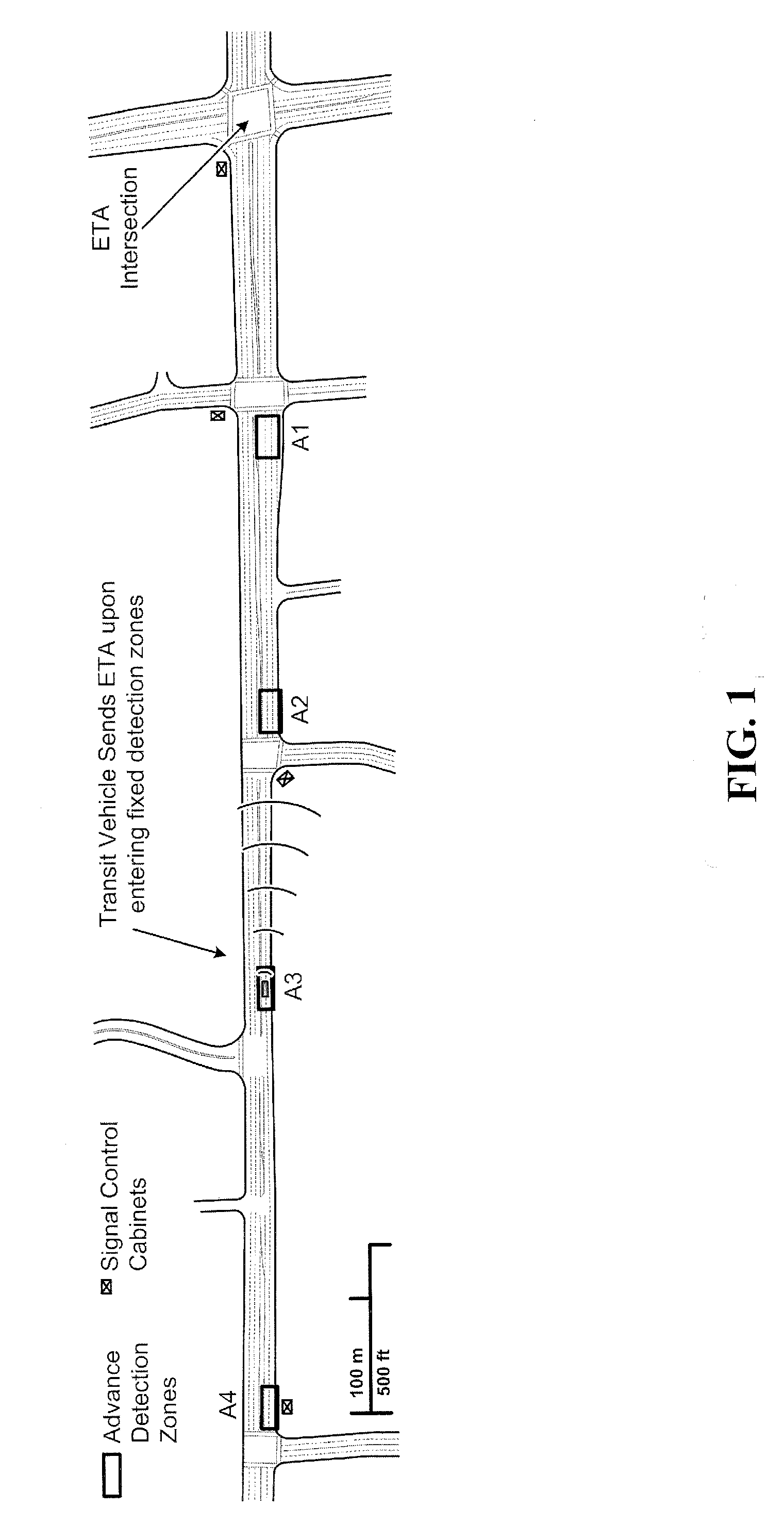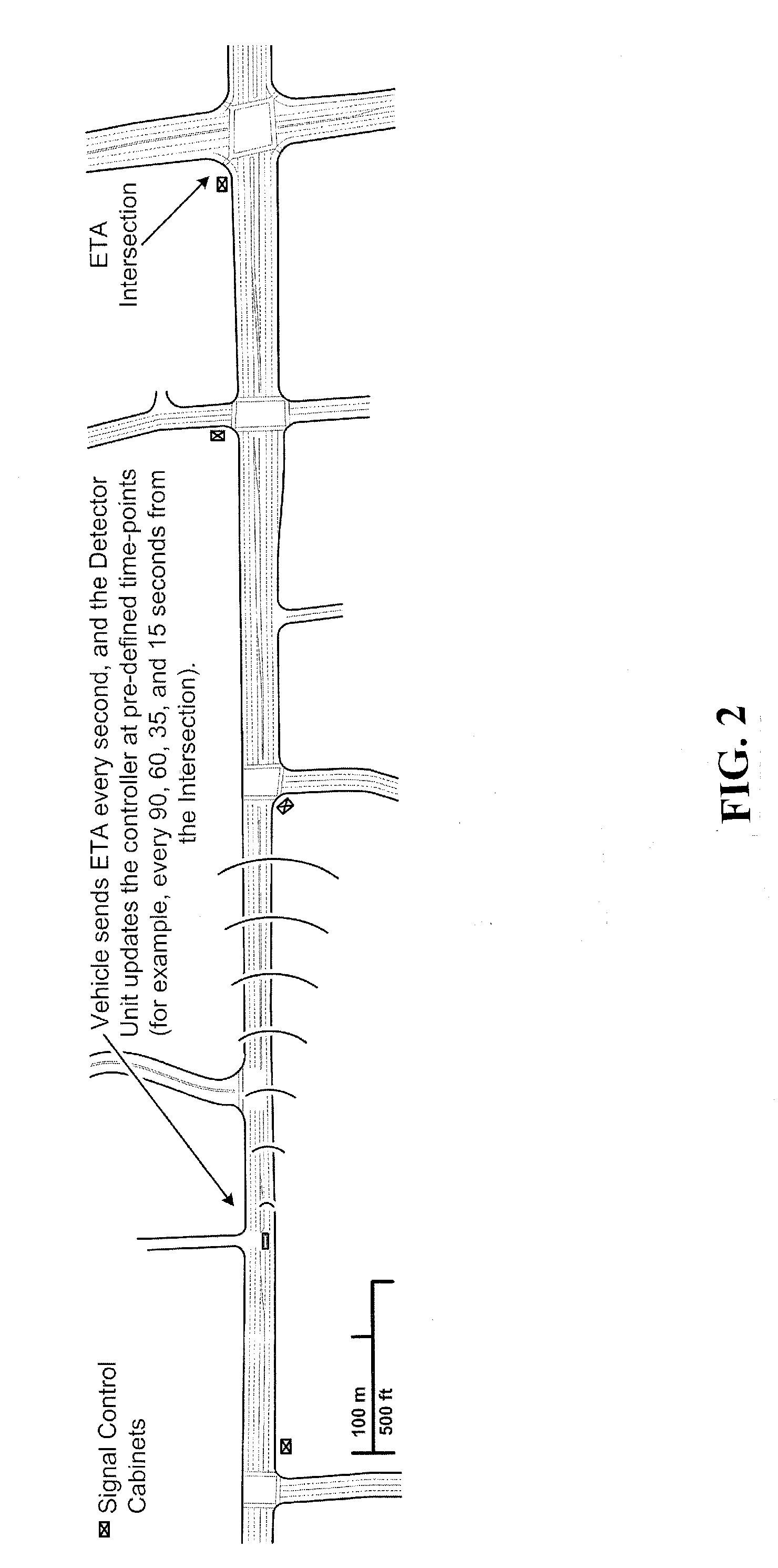Moreover, traffic delays impinge on productivity and economic efficiency—time spent traveling to and from work is not time spent doing work.
Further, longer commutes means longer running times and entails more
greenhouse gases.
Also, congested traffic and uncoordinated signal lights can cause delays in the
mass transit system which, if not remedied, can throw off an entire
mass transit schedule grid and disincentivise individuals from using mass transit systems.
For example, it has been demonstrated that schedule adherence for mass transit vehicles results in an increase in ridership.
Lastly, the importance of prioritizing and efficiently moving emergency vehicles through traffic lights is axiomatic.
While this type of control mechanism can be effective in one-way grids where it is often possible to coordinate signal lights to the posted
speed limit, this control mechanism is not advantageous when the
signal timing of the intersection would benefit from being adapted to the changing flows of traffic throughout the day.
Two-way streets are more complicated, but often end up being arranged to correspond with rush hours to allow longer
green light times for the heavier volume direction.
While cascading or synchronized central control systems are an improvement on the traditional
timer controlled systems, they still have their drawbacks.
Namely, priority vehicles in these systems are only able to interact with a virtual detection zone immediately preceding a particular intersection; there is no real-time monitoring of the traffic flows preceding or following this virtual detection zone across a grid of multiple signal lights.
Accordingly, these systems can provide for a priority vehicle, such as an
emergency vehicle, to be accelerated through a particular signal at the expense of other vehicles, but they lack the capability to adapt and adjust traffic flows to keep a mass transit vehicle, or
similar time scheduled vehicle, on time or adjust the lights in front of a mass transit vehicle to get it back on schedule.
Virtual detection zone based systems only have the capability for control of a particular
signal light to accelerate the movement of a
single vehicle or a group of vehicles approaching that signal directly; they cannot offer an integrated
control system with the capability of controlling the phases of multiple signal lights in a
grid system, altering the length of particular phases at particular signal lights within the
grid system to accommodate a particular vehicle traveling through the
grid system according to a relatively fixed path and schedule.
Another problem with virtual detection zone based systems is their disruption of the overall
traffic flow of the grid.
If a priority vehicle is sensed in the virtual detection zone, the immediately upcoming light will either change to green to give the priority vehicle the right-of-way and potentially disrupt the entire
system (something logical for allowing rapid passage of an
emergency vehicle) or will not because the vehicle lacks sufficient priority to disrupt the
system (as can be the case with a mass transit vehicle) simply to beat the next signal.
What detection zone based systems fail to take into account is the
impact this immediate change in an immediately approached
signal light phase, irrespective of other traffic at the light, has on the overall traffic flows of the grid as a whole.
Further, because of their focus on a single
signal light and vehicles approaching a single signal light, these systems are generally incapable of adjusting a series of lights within the traffic
grid based upon a vehicle's current position, speed, schedule and path of travel.
Another frequent traffic problem which cannot be addressed by these commonly utilized virtual detection zone based systems is mass transit vehicle bunching, also known as
bus bunching, clumping or platooning.
Thus, the lead mass transit vehicle in the bunch typically slows to pick up passengers that would otherwise be boarding the trailing mass transit vehicle.
This leads to overcrowding and further slowing of the
lead vehicle.
Conversely, the trailing mass transit vehicle encounters fewer passengers and, soon, both mass transit vehicles are in
full view of each other—to the dismay of passengers on the overcrowded and behind schedule vehicles.
It is no surprise that bunching is a leading complaint of regular transit riders and a headache for those operating and managing transit services.
The currently utilized detection zone based systems—with their control methodology localized to individual lights—are simply incapable of controlling or preventing bunching.
Another failing of the currently utilized detection zone based systems is their inability to modify the conditions under which a vehicle may request priority.
These systems are generally incapable of granting priority on a more nuanced and conditional basis such as only granting priority when another mass transit vehicle has not requested priority within a specified
time frame or only granting priority when an exit request has not been made for the next stop.
 Login to View More
Login to View More  Login to View More
Login to View More 


